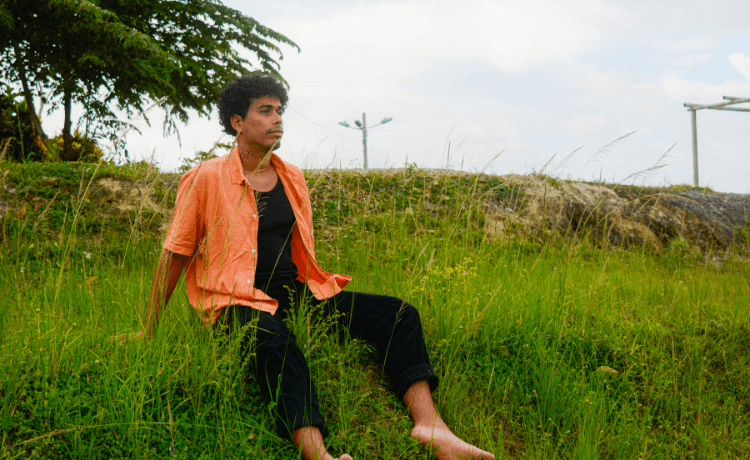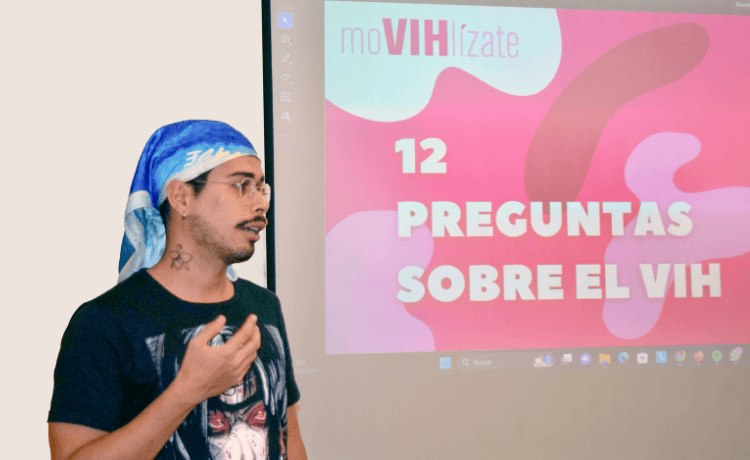
QUITO, Ecuador – “The reality of Esmeraldas is complex, but this community strength, this identity that constantly dignifies itself in search of joy, makes it a beautiful place.”
Twenty-seven-year-old Anthony takes pride in where he comes from. Esmeraldas, a coastal province at the northwestern border between Ecuador and Colombia, is known for its scenic beaches and warm climate. But the region also has its challenges: It has one of the highest poverty rates in the country. As a result, many residents face barriers to basic rights such as healthcare, education and clean water.
Like 45% of the population of Esmeraldas, Anthony is Afrodescendent. He recalls being surrounded by the love of his mother, his grandmother and his aunts throughout his childhood.
When he was 13 years old, Anthony began to identify as gender fluid. He began to seek out spaces where he could learn about himself in a safe and creative way. Through this exploration he discovered his passions in literature, art, music, poetry and theater. This love for art carried him through one of the most difficult times of his life.

A diagnosis that marked a new chapter
While in his first year of university, Anthony was diagnosed as HIV positive. With little knowledge about the condition or what it meant for his health, he was scared for his life. He immediately sought out help, but unfortunately, the first doctor he saw only perpetuated discriminatory ideas about HIV. Anothony, then 19, was rattled, but he refused to give up on his health. He travelled to Quito, Ecuador’s capital in search of quality information and care.
Globally, almost one in four people living with HIV have experienced stigma and discrimination from their community. LGBTQ+ communities and gender-diverse individuals especially prone to such treatment. Internalized stigma – which occurs when a person begins to believe negative stereotypes about themselves – is especially common among young people living with HIV.
Connecting with others in the community and accessing accurate information is key to tackling taboos. When Anthony arrived in Quito, he met a young man who invited him to join a safe space for young people living with HIV to share their experiences. With the support of his peers and the assistance of UNFPA and UNAIDS, Anthony took his first steps into the world of activism.
“This meeting represented the beginning of my healing process, not only physically, but also emotionally,” Another shared. “It made me understand that HIV was not synonymous with death.”
His involvement in this collective, peer-to-peer space encouraged Anthony to continue his studies in literature at the University of the Arts in Guayaquil. Afterward, he studied HIV and collective health at the Latin American Council for Social Sciences.

Activism through art
Anthony has continued to be a vocal advocate for young people living with HIV in Ecuador. In 2019, he became the leader of MoVIHlízate. Created with the support of UNFPA in 2018, MoVIHlízate brings together young people who live or coexist with HIV. The platform aims to tackle antiquated and stigmatizing attitudes surrounding sexuality and HIV through a gender-diverse and culturally sensitive rights-based approach.
For Anthony, MoVIHlízate is “not only a space for work, but also for friendship and support.” Under his leadership, young people across Ecuador have received comprehensive sex education and initiated campaigns to tackle issues of discrimination and stigma. The group also offers to accompany others living with HIV when they access health and protection services.
His long-standing passion for the arts has also given Anthony another vehicle for his activism. In 2023, he published ‘In the beginning was the fever’, a book of poems exploring his experience as a young man living with HIV. This year he curated the exhibition ‘POSITIVA: Latin American HIV Culture Artistic Residency’, an event that brought together nine Latin American artists living with HIV to address stigma and discrimination.
Anthony’s work to expand sex education is vital to the health and safety of young people in Latin America. Though the number of AIDS-related deaths in Latin America has decreased by 28% since 2010, the number of new HIV infections increased by 9% in the same period. HIV disproportionately affects young men who have sex with other men, transgender women and female sex workers. These three key populations accounting for more than half of new infections.
UNFPA is committed to investing in long-term solutions to support the health and rights of those living with HIV. Quality healthcare and comprehensive sex education are crucial to building the protective environments needed to prevent HIV and other sexually transmitted infections in adolescents and other populations in vulnerable conditions.